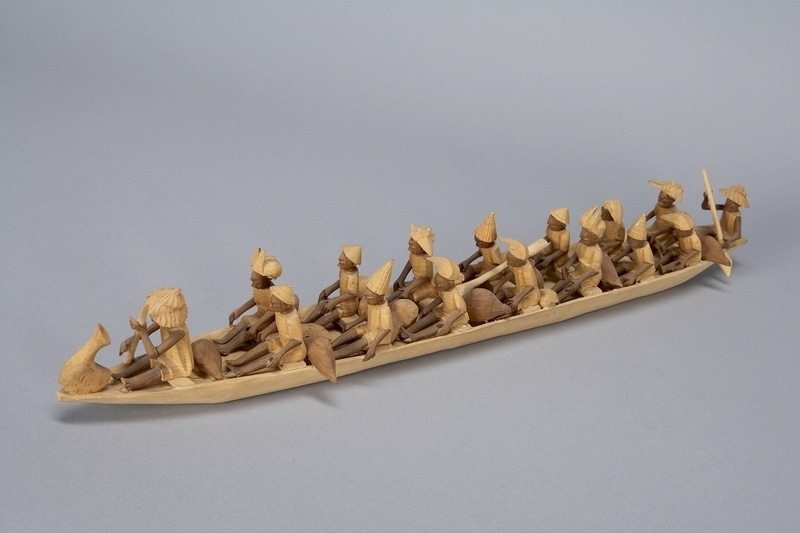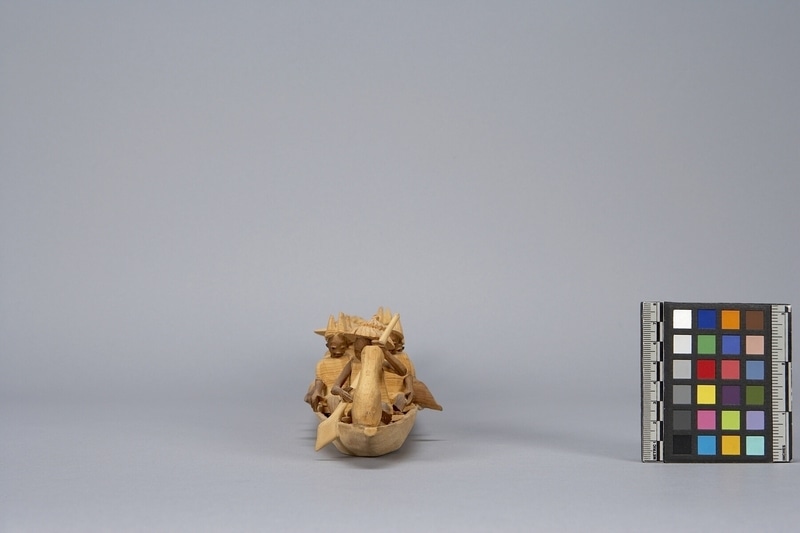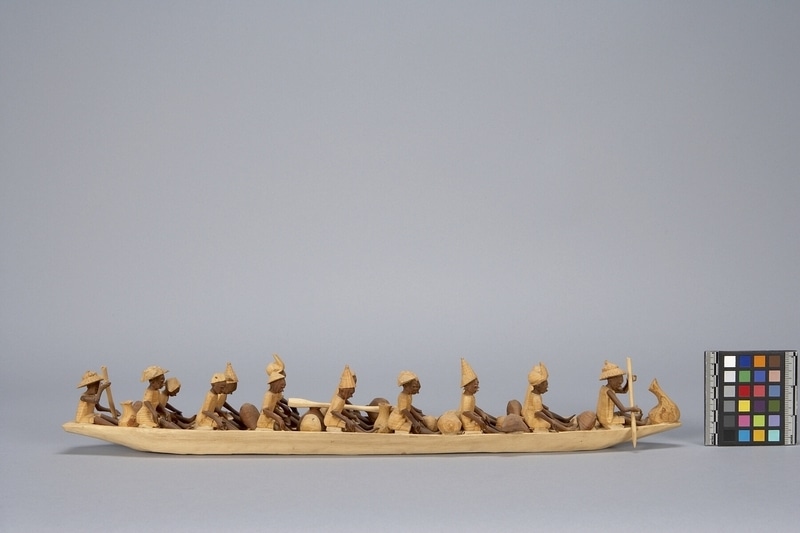Thorn Carving Item Number: Af360 from the MOA: University of British Columbia




Description
A small carving of a dug-out canoe containing seven pairs of passengers and two single paddlers one of which is at the bow while the other is at the stern. The cargo includes containers, a pestle, and other objects of various shapes distributed throughout the canoe. Four passengers are wearing short-sleeved dresses. Ten passengers are wearing short-sleeved shirts and shorts. The paddlers are wearing sleeveless shirts and shorts. A variety of hats are being worn by the passengers while brimmed hats are being worn by the paddlers. Six objects are light yellow-brown. Heads, limbs, seven objects, and one container are dark brown. The canoe, pestle, and two paddles are light yellow-brown.
History Of Use
Thorn carvings are miniatures depicting scenes from Nigerian life. This type of carving began circa 1930. Thorns vary in size. They can be as large as 12.7 cm. long and 9.6 cm. wide. They are comparatively soft and easily carved. The light yellow-brown thorn and the dark brown thorn come from the Ata tree; the light red-brown thorn comes from Egun trees. The parts are glued together with viscous paste made from rice cooked with water. They are carved by men.
Cultural Context
craft; tourist art
Item History
- Made in Nigeria before 1972
- Collected during 1972
- Owned by Andrew Stewart and Jessie Stewart before February 8, 1980
- Received from Andrew Stewart (Donor) and Jessie Stewart (Donor) on February 8, 1980
What
- Name
- Thorn Carving
- Identification Number
- Af360
- Type of Item
- carving
- Material
- atum thorn, rice adhesive, wood and egun thorn
- Manufacturing Technique
- carved and glued
- Overall
- height 8.0 cm, width 53.5 cm, depth 7.0 cm
Who
- Culture
- Yoruba
- Previous Owner
- Andrew Stewart and Jessie Stewart
- Received from
- Andrew Stewart (Donor) and Jessie Stewart (Donor)
Where
- Holding Institution
- MOA: University of British Columbia
- Made in
- Nigeria
When
- Creation Date
- before 1972
- Collection Date
- during 1972
- Ownership Date
- before February 8, 1980
- Acquisition Date
- on February 8, 1980
Other
- Item Classes
- carvings & sculpture
- Condition
- fair
- Accession Number
- 0590/0046